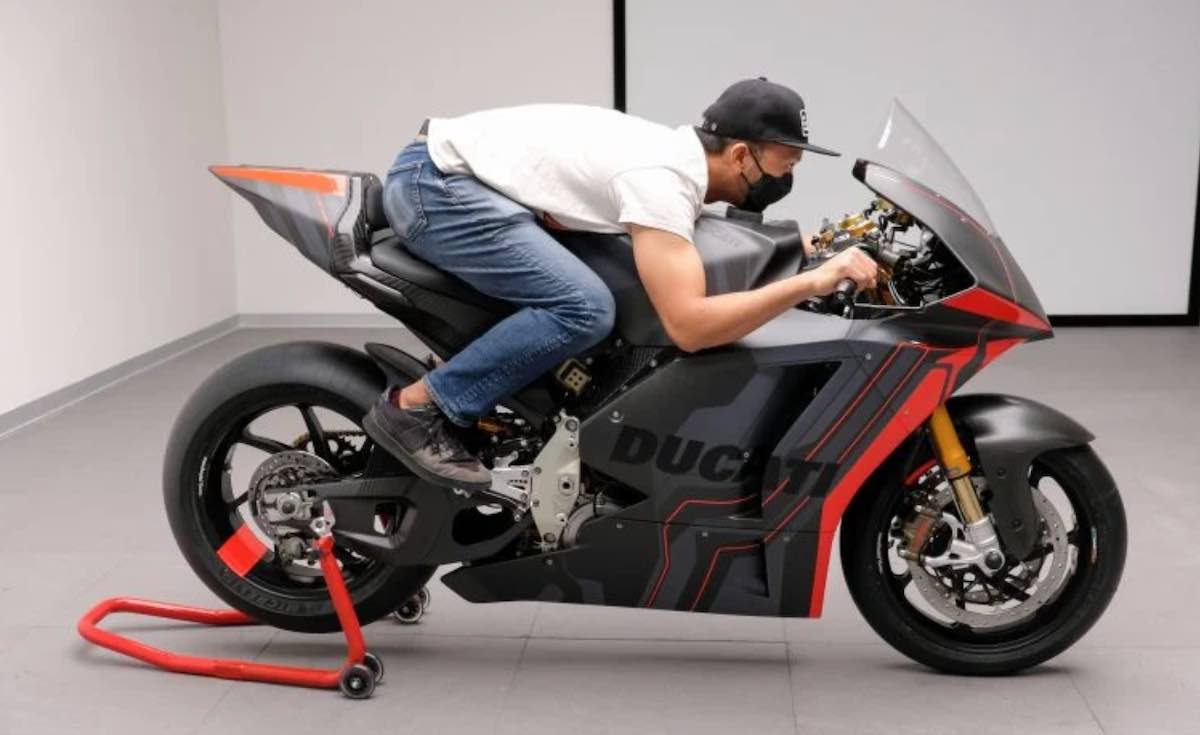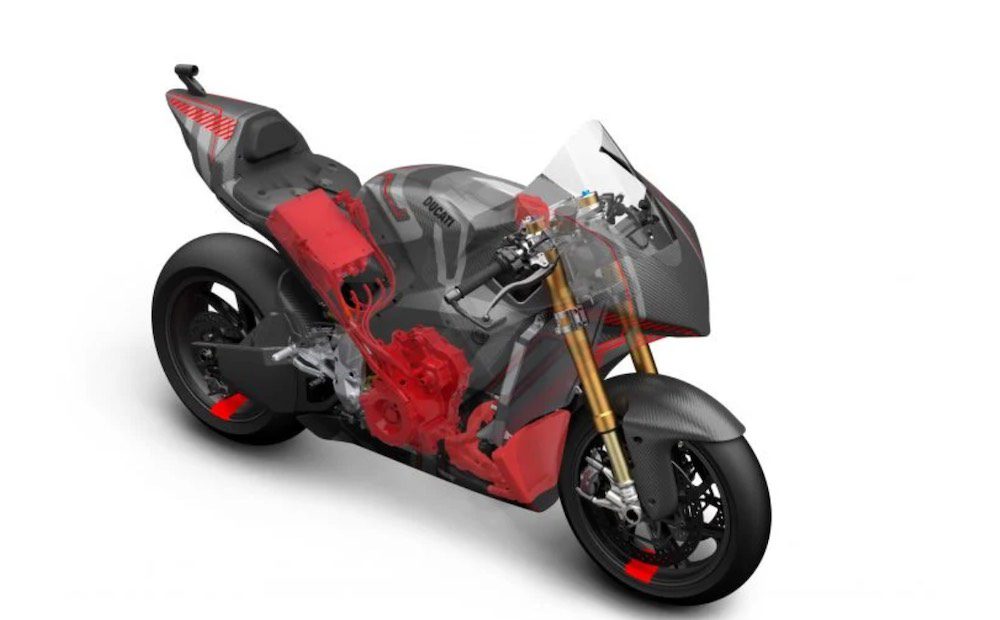Ducati is perhaps one of the best known motorcycle brands in the world, despite being a relatively small company. It is famous for its evocative bevel driven twins and some of the most beautiful motorcycle designs in the world, and it also a has an extremely distinguished record on the racetrack.
Its history of race bred technology and innovation left the world has now led the Bologna-based company to take over as the single supplier of electric motorcycles to the MotoE championship, currently in its third year.
Fellow Italian manufacturer Energica has supplied motorcycles for the first three years and hands over the mantle to Ducati from 2023. Based on a modified version of its high-end all electric street bike it has helped propel Energica onto the world stage and without doubt has the highest performance electric motorcycle on the street today.
I would hazard a very confident guess that every single Ducatisti on the planet expects them to debut with a bike that is better than Energica, which is what makes this switch so interesting. Deep emotional pride and brand competition will drive innovation, which we will benefit from.
In terms of the benchmark, Energica 2022 race bike specs describe a bike that has top of speed of 270kmh, accelerates to 100kmh in 2.6 seconds, has more than 20kWh of battery capacity, delivers continuous 120kW of power and 200Nm of torque in a package weight of 247kg.
Ducati are coming from a different angle to Energica because they don’t have a history of street-based electric motorcycles to lean on, instead opting to build an all out, single purpose race bike. Notably however, its parent group Volkswagen will have a vast number of lessons under its belt from the four-wheeled world and there are clues that this is being shared.
Ducati V21L specifications released
Ducati recently shared some details of their machine dubbed the V21L and some clues to its design philosophy which highlight this different approach.
At the heart of a successful race bike is the balance between power, torque and weight typically governed by strict rules and limits.
On paper, at least, we have some clues to Ducati’s strategy – starting with the bike’s weight, which is almost 9% lighter than the Energica right out of the gate.
They have achieved this through the extensive use of carbon fibre; a motor that is almost 10kg lighter than Energica’s; and a slightly smaller battery pack. Theoretically, a lighter bike needs less energy to go fast, all things being equal, is racing 101 and a great place to start.
Some crude spreadsheet maths do bear this out, too –the Energica has 0.485kW per kg and the Ducati V21L has 0.488kW per kg – a smidge under 1% better. Of course, power delivery torque and a bunch of other factors will determine the real world differences.

The team have employed an aluminium front subframe for the front end weighing a mere 3.1 kg), an entirely carbon fibre seat and tail unit and the lightweight aluminium swingarm is 4.8 kg. Having said this, even at 225kg the V21L still has some work to do to catch up to the premier class moto gp bikes at 157kg (min). But it’s great progress.
Then we have the motor and drive train. Ducati hasn’t revealed who is building its motors but says they are being built to their specifications and will deliver a claimed 110kW and 140Nm of torque. We do know that it’s using a gear reduction system to help keep rear sprocket size down, but I cant see a major difference from Energica in this regard.
At first glance this seems to be materially lower than Energica’s claimed 120kW and 200Nm but I suspect that the devil will be in the detail here because Ducati aren’t likely to plan on going slower.
We do know it revs higher to 18,000rpm compared to 12,000rpm on the Energica and we do know it has less weight to push. So perhaps lower power can deliver a faster bike – or perhaps they are holding back some specifications.

The motor is driven by an inverter controller also from an unnamed source but “found in other forms of electric vehicle racing” and notably running a much higher voltage of 800VDC, compared to Energica at 380VDC.
At a mere 5kG and presumably hailing from formula E or Volkswagen’s own electric race vehicles, being able to deliver that amount of power in a liquid cooled high voltage package is impressive.
The motor and controller share a common cooling circuit using a moto gp style dual radiator set – the smaller triangular heat exchanger used for the motor and controller.
The larger radiator is a notable difference from Energica and highlights that they have opted to also liquid cool the 18kWh battery pack, another change out of the gate to Energica’s “>20kWh” air cooled pack.
This was no doubt part of the reason Ducati opted for cylindrical rather than Prismatic battery cells using 1,152 cylindrical 21700 type cells “the same as you would find in a Tesla”.
This is an intriguing move because cylindrical cells take up more space than prismatic’s but the gap between them does theoretically allow for cooling architecture and presumably less thermal build up on both charging and discharging.
The MotoE teams have not been vocal about heat problems at least publicly, so either performance is being affected and we don’t know it, or Ducati believe they can eek out an advantage that will translate in other ways and compensate for the bulk and added weight of cooling equipment. Theory would say, better temperature management equals more consistent power across race distances.
They also talk at length about how they built a delicious looking all carbon fibre battery housing designed specifically to use up every possible odd shaped space within the always limited confines of a motorcycle chassis. Like all decent electric motorcycles, the pack is naturally a fully stressed member, forming an integral part of the chassis itself with the front and rear ends attached.
At first glance it does look like the 18kWh battery pack – or at least parts of the enclosure – are mounted higher than comparable machines but we don’t know the true weight distribution yet and I have little doubt that Ducati have worked long and hard on making this heavier than normal bike turn easily.
The suspension, brakes, telemetry and other key features are all directly taken from moto GP. Ducati Corse divisions explained it went to great lengths to model the bikes feel and behaviour on its well understood moto GP bikes, allowing riders to quickly adapt and theoretically, go fast quickly. I wont go through them in detail except to say they are obviously race class and no expense has been spared.
This is going to be great.

